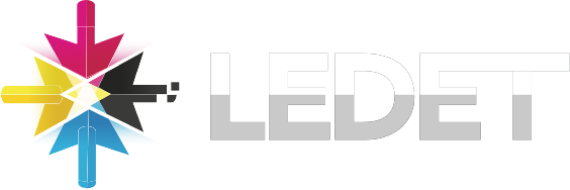Module 1: Creating advanced functionsThis module explains how to parameterize a command into an advanced function. Lessons:
- Converting a command into an advanced function
- Creating a script module
- Defining parameter attributes and input validation
- Writing functions that accept pipeline input
- Producing complex pipeline output
- Documenting functions by using comment-based help
- Supporting -WhatIf and -Confirm
Lab : Converting a command into an advanced function
- Converting a command into an advanced function
Lab : Creating a script module
Lab : Defining parameter attributes and input validation
- Defining parameter attributes and input validation
Lab : Writing functions that accept pipeline input
- Writing functions that accept pipeline input
Lab : Producing complex pipeline output
- Producing complex pipeline output
Lab : Documenting functions by using comment-based help
- Documenting functions by using comment-based help
Lab : Supporting -WhatIf and -Confirm
- Supporting -WhatIf and -Confirm
After completing this module, students will be able to:
- Convert a command into an advanced function.
- Create a script module.
- Define parameter attributes and input validation.
- Write functions that accept pipeline input.
- Produce complex pipeline output.
- Document functions by using comment-based help.
- Support -WhatIf and -Confirm.
Module 2: Using Microsoft .NET Framework and REST API in Windows PowerShellThis module explains how to use Microsoft .NET Framework and REST API to supplement functionality that Windows PowerShell commands provide.Lessons
- Using Microsoft .NET Framework in Windows PowerShell
- Using REST API in Windows PowerShell
Lab : Using Microsoft .NET Framework in Windows PowerShell
- Using Microsoft .NET Framework in Windows PowerShell
Lab : Using REST API in Windows PowerShell
- Using REST API in Windows PowerShell
After completing this module, students will be able to:
- Use Microsoft .NET Framework in Windows PowerShell.
- Use REST API in Windows PowerShell.
Module 3: Writing controller scriptsThis module explains how to combine advanced functions that perform a specific task and a controller script that provides a user interface or automates a business process.Lessons
- Introducing controller scripts
- Writing controller scripts that display a user interface
- Writing controller scripts that produce reports
Lab : Writing controller scripts
- Writing controller scripts that display a user interface
- Writing controller scripts that implement a text-based menu
Lab : Writing controller scripts that produce HTML reports
- Writing functions to be used in the controller script
- Writing a controller script that produces HTML reports
After completing this module, students will be able to:
- Describe controller scripts.
- Write controller scripts that display a user interface.
- Write controller scripts that produce reports.
Module 4: Handling script errorsThis module explains how to perform basic error handling in scripts.Lessons
- Understanding error handling
- Handling errors and timeouts in a script
Lab : Handling errors in a script
- Handling errors in a script
After completing this module, students will be able to:
- Describe error handling.
- Handle errors and timeouts in a script.
Module 5: Using XML, JSON, and custom-formatted dataThis module explains how to read, manipulate, and write data in XML and JSON format.Lessons
- Reading, manipulating, and writing XML-formatted data
- Reading, manipulating, and writing JSON-formatted data
- Reading and manipulating custom-formatted data
Lab : Reading, manipulating, and writing XML-formatted data
- Testing the provided tools
- Updating an XML inventory document
After completing this module, students will be able to:
- Read, manipulate, and write XML-formatted data.
- Read, manipulate, and write JSON-formatted data.
- Read and manipulate custom-formatted data.
Module 6: Enhancing server management with Desired State Configuration and Just Enough AdministrationThis module explains how to write Desired State Configuration (DSC) configuration files, deploy those files to servers, and monitor servers’ configurations. This module also explains how to restrict administrative access with Just Enough Administration (JEA).Lessons
- Understanding Desired State Configuration
- Creating and deploying a DSC configuration
- Implementing Just Enough Administration
Lab : Creating and deploying a DSC configuration
- Creating and deploying a DSC configuration
Lab : Configuring and using JEA
- Configuring and using JEA
After completing this module, students will be able to:
- Understand DSC.
- Create and deploy a DSC configuration.
- Implement JEA.
Module 7: Analyzing and debugging scriptsThis module explains how to use native Windows PowerShell features to analyze and debug existing scripts.Lessons
- Debugging in Windows PowerShell
- Analyzing and debugging an existing script
Lab : Analyzing and debugging an existing script
- Analyzing and debugging an existing script
After completing this module, students will be able to:
- Debug in Windows PowerShell.
- Analyze and debug an existing script.
Module 8: Understanding Windows PowerShell WorkflowThis module explains the features of the Windows PowerShell Workflow technology.Lessons
- Understanding Windows PowerShell Workflow
Lab : Creating and running a Windows PowerShell Workflow
- Creating and running a Windows PowerShell Workflow
Our goal is to make sure your class meets your objectives, not ours. Therefore, all of our outlines are treated as guides to help steer the workshop. This outline does not guarantee that all the topics listed will be covered in the time allowed. The amount of material covered is based on the skill level of the student audience. We may change or alter course topics to best suit the classroom situation.












